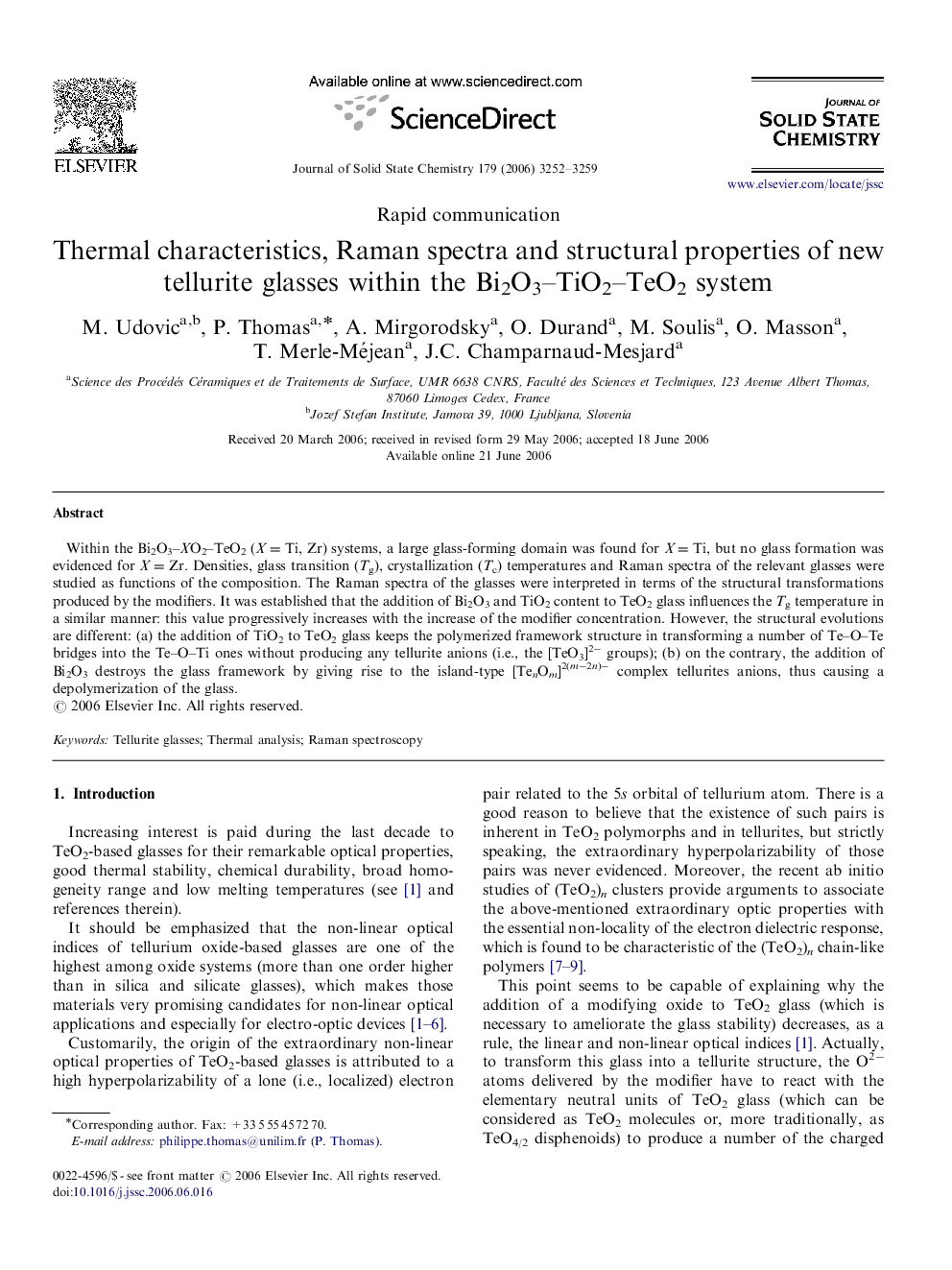| Article ID | Journal | Published Year | Pages | File Type |
|---|---|---|---|---|
| 1333930 | Journal of Solid State Chemistry | 2006 | 8 Pages |
Within the Bi2O3–XO2–TeO2 (X=Ti, Zr) systems, a large glass-forming domain was found for X=Ti, but no glass formation was evidenced for X=Zr. Densities, glass transition (Tg), crystallization (Tc) temperatures and Raman spectra of the relevant glasses were studied as functions of the composition. The Raman spectra of the glasses were interpreted in terms of the structural transformations produced by the modifiers. It was established that the addition of Bi2O3 and TiO2 content to TeO2 glass influences the Tg temperature in a similar manner: this value progressively increases with the increase of the modifier concentration. However, the structural evolutions are different: (a) the addition of TiO2 to TeO2 glass keeps the polymerized framework structure in transforming a number of Te–O–Te bridges into the Te–O–Ti ones without producing any tellurite anions (i.e., the [TeO3]2− groups); (b) on the contrary, the addition of Bi2O3 destroys the glass framework by giving rise to the island-type [TenOm]2(m−2n)− complex tellurites anions, thus causing a depolymerization of the glass.
Graphical abstractRaman spectra of the titanium tellurite glasses and of the relevant crystalline compounds.Figure optionsDownload full-size imageDownload as PowerPoint slide
